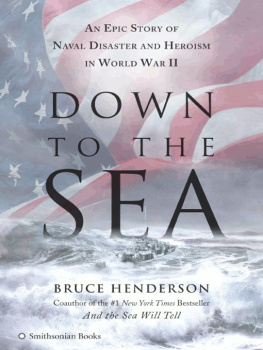Red Navy at Sea: Soviet Naval Operations on the High Seas, 1956-1980
About the Book and Author
Red Navy at Sea: Soviet Naval Operations on the High Seas, 1956-1980
Bruce W. Watson
This is the only book to offer a detailed chronology of modern Soviet naval operations set within the framework of long-range Soviet foreign and domestic policy. This context is important because it puts the navy in its proper place as a significant cog in the gigantic machinery of Soviet "grand strategy." Commander Watson argues that the Soviet Navy's physical configuration, strategy, and operations reflect a long-term "upgrading" pattern, designed to create an equal-partner status in the total balance of Soviet military forces. Changes in the navy's activities are not merely pragmatic reactions to momentary crises or shifts in world power trends. TTie navy has played an integral part in implementing the four strategic long-range goals of Soviet policy: defense of the Soviet Union, enhancement of its international position, establishment and maintenance of Soviet military superiority internationally, and the promotion of other Communist revolutions.
Commander Watson discusses in detail Soviet naval operations in ail of the world's oceans. He provides new insight into the dimensions of Soviet naval presence and port visit activity, using vast amounts of statistical material gathered from his original research. The text is supplemented by maps, photographs, and extensive tabular documentation.
Dr. Bruce W. Watson is presently a commander in the United States Navy. He teaches at the Defense Intelligence School in Washington, D.C. Dr. Watson holds a doctorate in Russian area studies from Georgetown University and is also a member of its adjunct staff, lecturing on Soviet naval and maritime affairs.
Red Navy at Sea: Soviet Naval Operations on the High Seas, 1956-1980
Bruce W. Watson
First published 1982 by Westview Press, Inc.
Published 2019 by Routledge
52 Vanderbilt Avenue, New York, NY 10017
2 Park Square, Milton Park, Abingdon, Oxon OX14 4RN
Routledge is an imprint of the Taylor & Francis Group, an informa business
Copyright 1982 Taylor & Francis
All rights reserved. No part of this book may be reprinted or reproduced or utilised in any form or by any electronic, mechanical, or other means, now known or hereafter invented, including photocopying and recording, or in any information storage or retrieval system, without permission in writing from the publishers.
Notice:
Product or corporate names may be trademarks or registered trademarks, and are used only for identification and explanation without intent to infringe.
Library of Congress Catalog Card Number: 81-21948
ISBN 13: 978-0-367-28527-2 (hbk)
For my wife, Susan
Contents
- Part 1
The Atlantic Ocean - Part 2
The Mediterranean Sea - Part 3
The Pacific and Indian Oceans
- Soviet naval port visit to Boston
This is a history of Soviet naval operations on the high seas. It begins with the year 1956, when Admiral Sergei G. Gorshkov was appointed commander in chief of the Soviet Navy, and continues through 1980. Major emphasis is on the period since 1967, when operations began to increase in importance. Although much has been written on Soviet naval construction and selected operations, a comprehensive history of Soviet naval operations has not existed until now.
The Soviets have built and operated a modern navy that has contributed to Soviet progress toward certain long-range goals. The navy's mission has been to assist in implementing a Soviet policy aimed at achieving four long-range goals: defending the Soviet Union, enhancing the country's international position, establishing a preponderance of Soviet power in the international sphere, and promoting external political changes that are compatible with the Soviet system. The navy's tasks include participating in the nation's defense; posing a strategic threat to the United States; stationing naval power in strategic areas of the high seas in order to oppose U.S. naval power in periodic U.S.-Soviet confrontations; projecting naval power into the Atlantic, Pacific, and Indian oceans and the Mediterranean and Caribbean seas to assist in advancing Soviet influence in the Third World; harassing Western naval forces; making port visits; and accomplishing other politically motivated operations relevant to Soviet strategic goals.
The majority of studies on the Soviet Navy have assumed that it has been built and operated under the influence of relatively short-term goals and objectives. In that context, tactical changes frequently have been interpreted as major departures in Soviet planning. Thus many authors have argued that the navy is governed by sets of rules to which naval operations must conform so we should expect certain reactions to given sets of circumstances, and analyses of past reactions to discrete events should support the development of models to accurately predict future activities. These studies often depict the Soviet leadership as pragmatic, guided by an ad hoc strategy, and making maximum use of contemporary opportunities. Their authors generally ignore the influence of Marxist-Leninist ideology in Soviet military operations and the probable existence of a long-range strategy.
Dismissing these two factors can lead to faulty biases. For example, the appearance of new ships has been interpreted as a reflection of major strategy shifts, ignoring the fact that the Soviets have maintained an impressive construction program since 1956. likewise, the marked uniformity in naval operations is often understated. For instance, the Soviet Navy has expanded its operations over increasingly larger areas of the world's oceans, and in all areas, these operations have been similar. The use of anchorages, the conformance of port visits to established patterns, the use of indigenous port facilities, and the consistency in force composition are all reflections of this similarity. Indeed, there appears to be a significant continuity in Soviet naval operations that has not been given sufficient attention.
This study examines that continuity and the long-range strategies I consider to be of prime importance in the Soviet Navy's operations since 1956. In this way, I hope to generate critical discussion of many of the current assumptions concerning the Soviet Navy.
Bruce W. Watson
Fairfax, Virginia
I wish to express my gratitude to several people for their invaluable assistance and support, which made this study possible. Foremost is the late Professor Joseph Schiebel of Georgetown University, whose theory of Soviet strategy is a basic premise of this work and whose support, encouragement, and guidance dominated its scope and thrust. I also wish to thank Professor Paul Holman of Georgetown University for his guidance, advice, and criticism.
I would also like to acknowledge the untiring efforts of my wife, Susan, and to thank her for her constant support, assistance, and encouragement, without which the completion of this work would not have been possible. I am indebted to my brother, Donald, who prepared all the maps that appear on the following pages; to Eugene Grant, who typed all the tables; to my parents, Wallace and Viola Watson, for a lifetime of encouragement, support, and guidance; and to my children, Bruce, Jr., Susan, and Jennifer, whose spontaneous examinations of my drafts and research materials although unsettlingprovided relief from an at-times arduous task. Finally, I would like to acknowledge, with great appreciation, James George, Dale Tahtinen, Gerald Hopple, Ida and Maurice Kramer, and Elizabeth and Louis Colonna for their advice and encouragement over the years.












